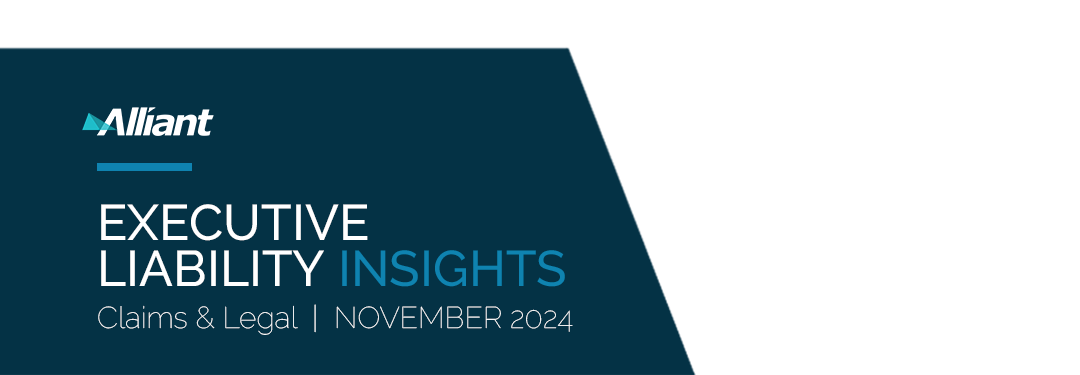
EMPLOYMENT CORNER


The SEC settled with several public companies (the “Companies”) in enforcement actions for violations of whistleblower protection laws. These actions stemmed from the Companies having employment, separation, and other agreements that included provisions waiving their right to monetary recovery when partaking in a government agency’s investigations. The SEC’s actions were grounded in the allegation that these employment provisions limited participation in its whistleblower program, violating whistleblower protection Rule 21F-17(a) (the “SEC’s rule”).
The SEC’s rule prohibits any action that creates impediments to direct communications with the SEC about potential securities law violations. The Companies argued that they did not enforce the provisions and had no knowledge of circumstances in which employees declined to speak with the SEC. Nevertheless, the SEC alleged that the existence of the written provisions in the employees’ contracts sufficiently limited participation in its whistleblower program.
The Companies paid millions in civil penalties to settle the charges with settlements ranging from $1.4 million to as little as $20,000, with an average settlement of approximately $435,000.
The SEC believes that the whistleblower protection rule ensures market integrity by incentivizing the reporting of potential violations of securities laws.
COURT FINDS COSTS OF CORRECTION QUALIFY AS COVERED LOSS
N. Am. On-Site, LLC v. Zurich Am. Ins. Co., 2024 U.S. App. LEXIS 27286 (11th Cir., 28 Oct. 2024).


A circuit court reversed a lower court in holding that an insured’s incurred costs of correcting clerical errors constituted covered loss under the commercial liability policy’s Employee Benefits Liability coverage line.
This case stemmed from a dispute between an insured staffing agency (the “Agency”) and its insurance carrier (the “insurer”) involving costs incurred to correct various clerical errors in the Agency’s administration of a 401(k)-retirement plan. The Agency remedied its mistakes by issuing corrective payments and paying the Department of Labor for penalties of untimely IRS reporting caused by the Agency’s clerical errors.
Subsequently, the Agency sought reimbursement from its commercial insurance policy. The carrier denied coverage and argued that the corrective payments were not covered loss because (1) the Agency made payments before notifying the insurer and without insurer’s consent and (2) the matter involved failure to adequately administer ERISA related programs which would trigger the policy’s ERISA exclusion. Furthermore, the insurer argued that since the Agency was not ordered to pay damages pursuant to a third-party claim, the insurer did not become “legally obligated to pay as damages because of any act, error, or omission, in the ‘administration’ of [the Agency’s] employee benefit program.”
The court rejected the insurer’s arguments, pointing to the insurer’s obligation to indemnify the Agency for any sums that the Agency was “legally obligated to pay as damages.” Based on IRS regulations, the Agency was required to make corrective payments or else it would have found itself in violation of federal law. In other words, the Agency did not voluntarily and unilaterally decide to pay the corrective costs. Thus, the insurer’s interpretation of the words “legally required” in the context of the policy was inaccurate.
According to the court, the insurer similarly could not argue that the Agency would have paid to the Plan under the terms of the Plan because the error resulted in the Agency’s failure to deduct contributions from employee paychecks. Normally, these contributions would have come out of employee accounts and not the Agency’s pockets.


One of the ERISA class action suits (the “Suit”) filed against various private universities in 2017 has now been granted certiorari by the U.S. Supreme Court with oral arguments scheduled for January 2025. With allegations of excessive fees and underperforming investments, the Suit centers on class members’ (the “Class”) claims that a private university (the “University”) breached ERISA prohibited transactions provisions, specifically Section 406(a)(1)(C) of ERISA (the “Section”).
In the Second Circuit, the Class argued that under the Section’s plain language, any transaction for services with a “party in interest” was presumptively prohibited. The Section then shifted the burden to the fiduciary to prove that an exemption applied. The University, on the other hand, argued that the Class must also assert specific facts showing the arrangement was unreasonable or unnecessary in addition to establishing that it engaged in a transaction with a service provider.
The Second Circuit sided with the University, finding that the Section’s prohibitions go jointly with the exemptions under Section 408 of ERISA. It held that in addition to alleging a transaction with a service provider, the Class must also present facts indicating the arrangement was unreasonable or unnecessary.
The Second Circuit’s decision contributes to a circuit split regarding the pleading standards for ERISA prohibited transaction claims. While some courts allow for minimal allegations to proceed in a claim, others require more specific allegations, such as the existence of a lower-cost alternative.
The Supreme Court’s ruling will help in resolving the circuit split and clarify the standard for proceeding in ERISA prohibited transaction claims, particularly for recordkeeping fees. The outcome of the ruling will, likely, influence future litigation on cases involving ERISA fiduciary duties and plans.